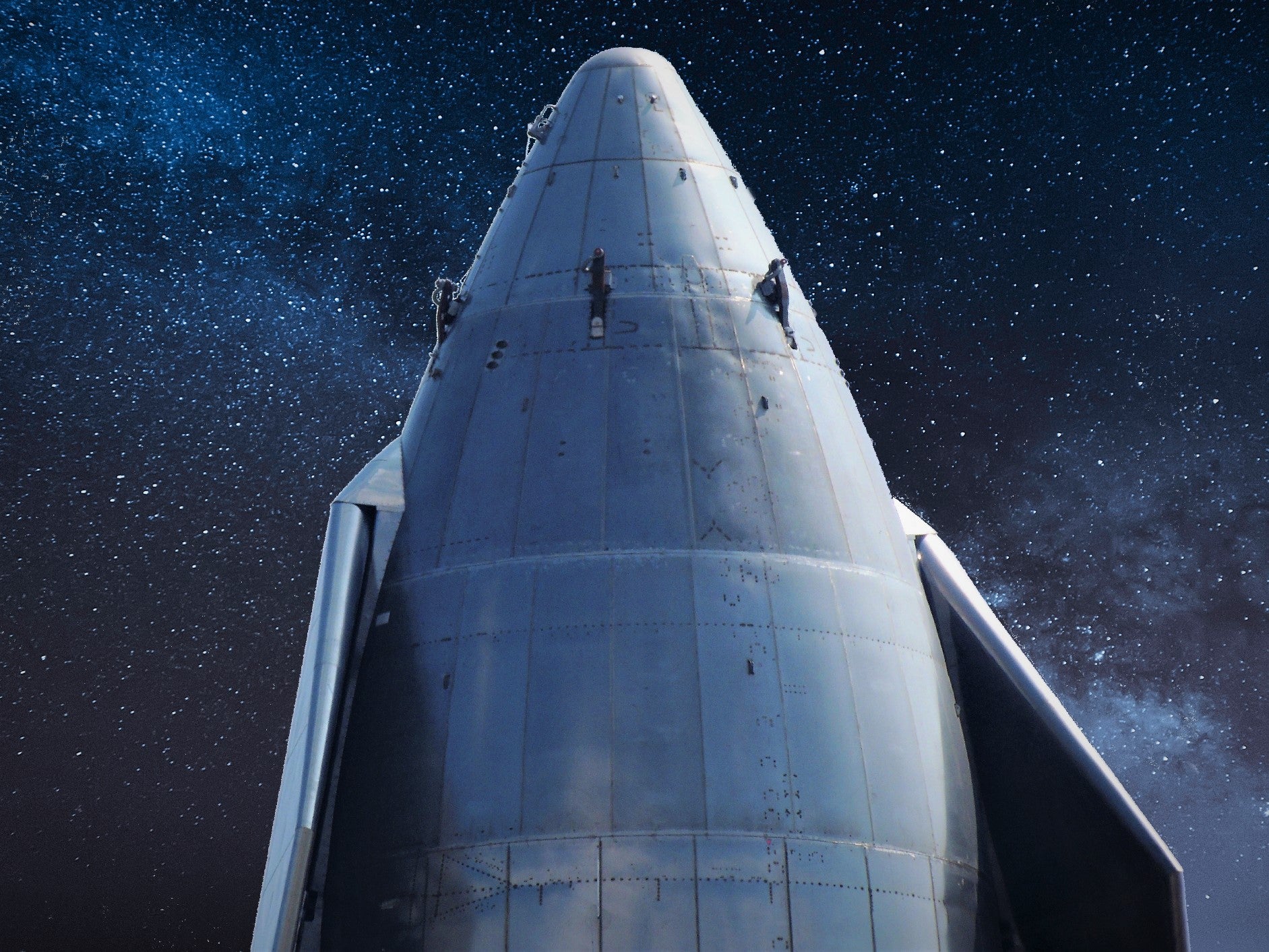SpaceX Starship: What actually is Elon Musk’s spacecraft that will take people to the Moon – and colonise Mars
The rocket is unlike any spaceship that has ever flown before, featuring private cabins, large common area and a viewing gallery

Your support helps us to tell the story
From reproductive rights to climate change to Big Tech, The Independent is on the ground when the story is developing. Whether it's investigating the financials of Elon Musk's pro-Trump PAC or producing our latest documentary, 'The A Word', which shines a light on the American women fighting for reproductive rights, we know how important it is to parse out the facts from the messaging.
At such a critical moment in US history, we need reporters on the ground. Your donation allows us to keep sending journalists to speak to both sides of the story.
The Independent is trusted by Americans across the entire political spectrum. And unlike many other quality news outlets, we choose not to lock Americans out of our reporting and analysis with paywalls. We believe quality journalism should be available to everyone, paid for by those who can afford it.
Your support makes all the difference.In late October 2001, Elon Musk travelled to Russia with the hope of buying three intercontinental ballistic missiles for $20 million. Flush with cash after co-founding PayPal, his plan was to use the rockets to blast a robotic greenhouse to Mars and grow plants using Martian soil.
‘Mars Oasis’, as the project was known, would produce the first oxygen on the Red Planet and would serve Musk’s greater goal of reigniting public interest in human space exploration.
But the Russians did not take the young dotcom millionaire seriously and no deal was ever made. Instead, Musk set about creating SpaceX to build his own rockets for a fraction of the price.
Nearly two decades later, and roughly $200 billion richer, Musk is on the cusp of building a rocket capable of inter-planetary space travel – and has already secured a multi-billion dollar contract with Nasa to use it to land astronauts on the Moon.
Starship is currently humanity’s best chance of reaching Mars, with no other private company or government space agency yet to put a program in place that will send humans any further than the Moon. SpaceX is hoping to achieve crewed missions to Mars before the end of the decade.
This ambitious timeline involves building up to 100 Starships every year, with each one capable of carrying up to 100 people. By 2050, Musk believes it will be possible to have established a self-sustaining colony on Mars, thus ensuring the continued survival of our species.
For any of this to be realised, SpaceX first needs to prove that its Starship craft can launch and land and relaunch and land again and again reliably, safely and affordably – not just on Earth but also on the more hostile environments of the Moon and Mars.
SpaceX only began testing Starship prototypes in January 2020, but it has done so at an astonishing rate. After two successful 150m “hops” at its Starbase facility in Boca Chica, Texas, the firm began a series of high-altitude flight tests at a frequency of nearly one a month.
The first four of these ended in explosions but each one achieved new milestones in the spacecraft’s development and advanced SpaceX’s schedule towards conducting an orbital Starship flight by July.
Alongside Starship, SpaceX is also building a Super Heavy booster that will also be fully reusable and capable of supporting regular rocket launches from Earth.
When combined, this two-stage rocket will measure 120 metres in height and will be the world’s most powerful launch vehicle ever developed.
According to SpaceX’s user guide for Starship, the Starship and Super Heavy systems will allow for “space-based activities that... have never been possible before”.
The craft itself will also be unlike any spaceship that has ever flown before, featuring “private cabins, large common areas, centralised storage, solar storm shelters and a viewing gallery”.
In announcing its involvement in Nasa’s Artemis program, SpaceX said the Moon missions will “lay the groundwork for human exploration to Mars and beyond”.
Next year will mark 50 years since a human last set foot on the Moon. Musk may have already achieved his goal of recapturing people’s imagination when it comes to the possibility of exploring the Solar System in the near future.
The Mars Oasis project may have never been realised, but the drive behind it remains. Musk’s ambition has only grown, and with Starship he could finally succeed in extending life beyond Earth.
“If we make life multiplanetary, there may come a day when some plants and animals die out on Earth, but are still alive on Mars,” he tweeted ahead of the latest Starship SN15 flight test. “Let’s make the sci-fi future we want real!”



Join our commenting forum
Join thought-provoking conversations, follow other Independent readers and see their replies
Comments